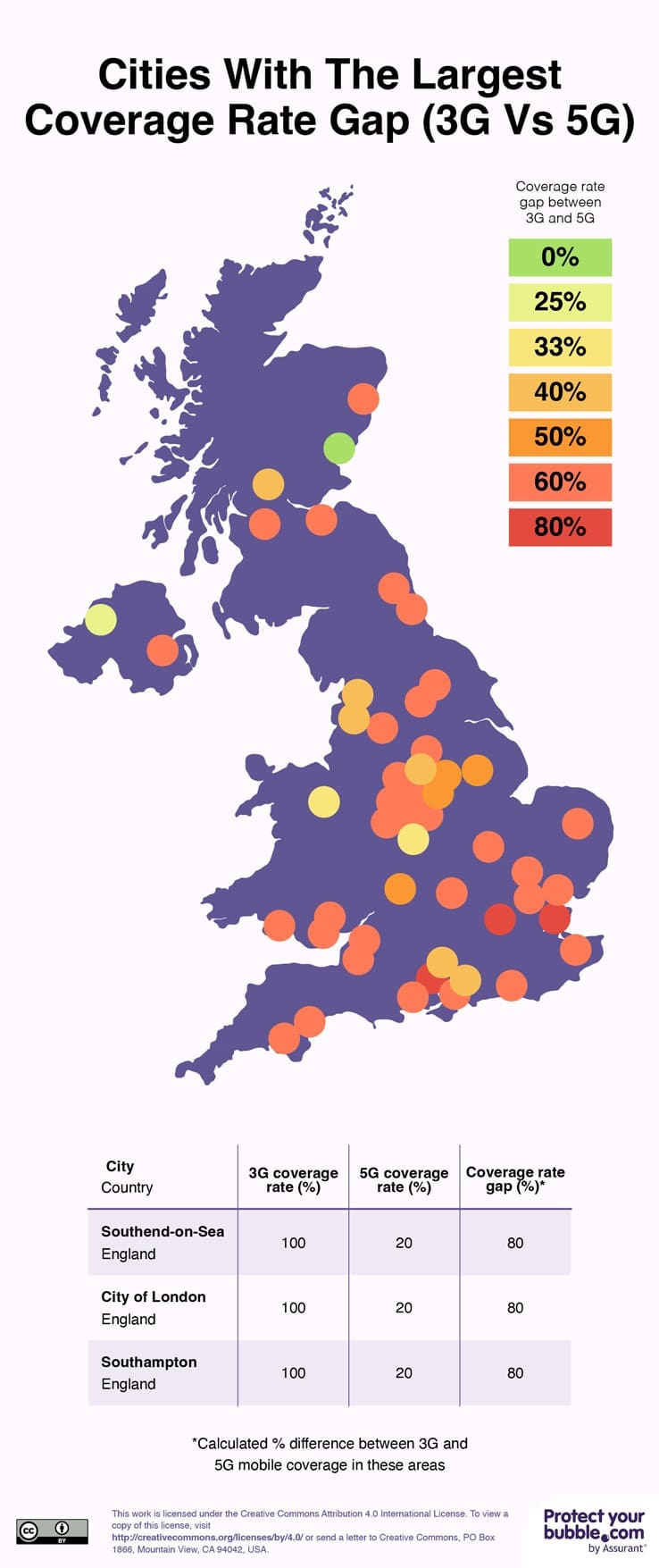Which cities have the largest gap in coverage between 3G and 5G?
08 May 2025
Mobile coverage is always a contentious issue within urban areas, with many phone carriers struggling to have continuous connections, whilst others manage to find strong connections with certain coverage generations. However, the switch off for 3G has begun to roll out and the final mobile operators still with access are nearing their deadline.
For 5G, which went live in 2019, there is still major room for improvement to replace the phased-out generations. Despite its many benefits, including faster downloads, lower latency and improved energy efficiency, it is still lacking in infrastructure, with many areas of the UK still only able to gain connectivity outdoors and in many rural areas no opportunity at all.
At Protect Your Bubble, a Freedom of Information Act was requested from Ofcom to find out the average percentage of mobile coverage in areas across the UK, looking at comparing the nearly phased-out 3G network and the most recent generation, 5G.
Research was conducted to calculate the percentage difference between the average coverage between these two networks to find out which cities still have a long way to go for 5G reliability.
Cities with the Largest Coverage Rate Gap (3G vs 5G)
Below is a heat map of the UK’s major cities, with green colour codes corresponding to areas with the lowest coverage gap between 3G and 5G, which represents how coverage generations are both equally reliable in these areas. Alternatively, areas with red have the largest percentage coverage gap, with 5G having lower reliable coverage.
For many places, the coverage for 5G is increasing, with an average of 50% difference between 3G and 5G coverage, but this still reflects areas of improvement to ensure reliable connections in urban areas.
Cities with the longest way to go for equal coverage for both networks are as follows:
- Southend-on-Sea, Essex
- City of London
- Southampton, Hampshire
These locations have a 100% coverage rate with 3G, whilst only an average of 20% coverage rate for 5G, equating to an 80% reliance gap.

Alternatively, Dundee City has a 0% coverage gap between 3G and 5G, with Derry City and Strabane following with a 25% coverage gap.
Conclusion
Depending on your mobile operator, you could be able to access 5G more easily than others, but overall, there is still a definite gap between the network's coverage, which must be rectified to continue secure connectivity across the UK. Currently, there is a goal to achieve standalone 5G coverage in ‘all populated areas’ by 2030, but there are complex challenges faced with planning permissions and security concerns that need to be addressed in order to align with this time limit.
Methodology
For this piece, an FOI was submitted to Ofcom to understand the outdoor reliable coverage availability of 3G and 5G in different UK cities across multiple mobile operators.
For 3G, Ofcom measures signal strength based on the minimum signal strength needed to make a 90-second voice call reliably 98% of the time. For 5G, due to its ongoing roll-out, Ofcom measures signal strength by varying levels of reliability. For this study, we focused on the “Very High Confidence” metric, which predicts reliable coverage with 95% probability.
We compared data for 3G coverage reliability against 5G coverage reliability in each city to identify the coverage rate gap.
Below are further Ofcom methodologies that produced the mobile coverage data:
- Data - Methodology
- Overall - Methodology